How to Choose Industrial Gas Cylinder Safety Cabinets for Cambridge Labs: A Guide to Acetylene, Oxygen, and Liquefied Gas Double-Bottle Storage Boxes
In laboratory settings—especially in research-intensive institutions like the University of Cambridge—safely storing industrial gas cylinders (such as acetylene, oxygen, or liquefied gases) is non-negotiable. Improper storage can lead to leaks, fires, or explosions, putting personnel and equipment at risk. This guide breaks down how to select the right gas cylinder safety cabinet for your lab, covering key specifications, features, and best practices aligned with safety standards and sustainable lab management.
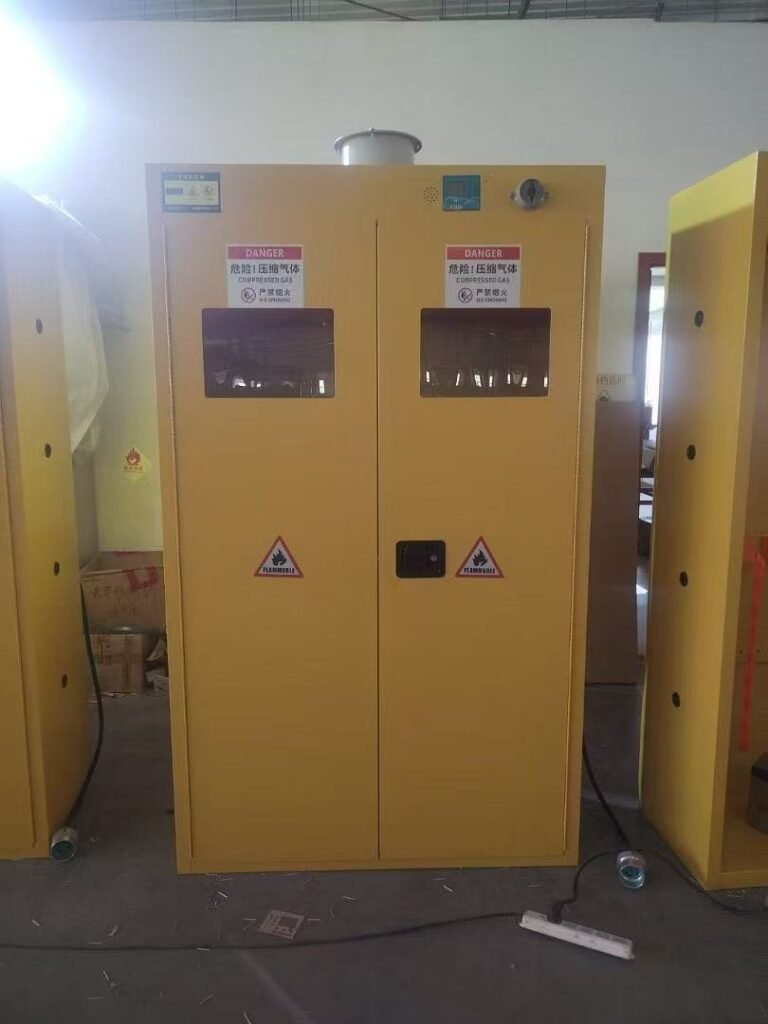
Why Gas Cylinder Safety Cabinets Matter
Gas cylinders are high-pressure vessels that require secure, ventilated storage to prevent accidents. For labs handling flammable (e.g., acetylene), oxidizing (e.g., oxygen), or toxic gases, a dedicated safety cabinet is essential to:
- Prevent unauthorized access (via locked doors).
- Ensure proper ventilation (to disperse leaked gases).
- Comply with regulations like OSHA (U.S.) or COSHH (UK).
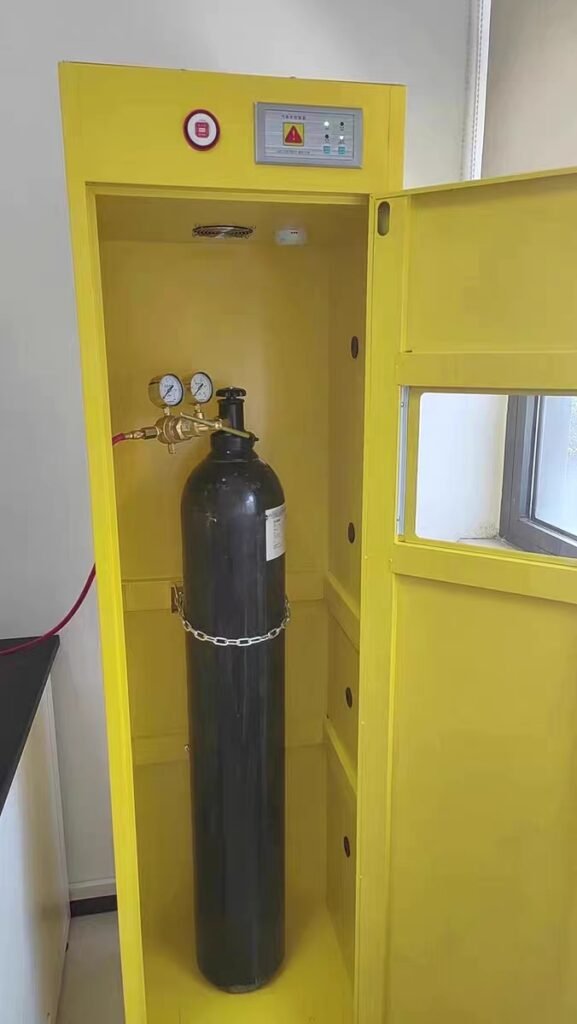
Key Parameters to Consider When Choosing a Gas Cylinder Cabinet
1. Cabinet Size: Single, Double, or Triple Bottles?
The first decision is matching the cabinet’s capacity to your lab’s needs:
- Single-bottle cabinets: Ideal for small labs or low-volume gas use (e.g., a single oxygen cylinder for cell culture).
- Double-bottle cabinets: Perfect for labs using two compatible gases (e.g., acetylene and oxygen for welding applications). Ensure the cabinet has separate compartments to avoid cross-contamination.
- Triple-bottle cabinets: Suitable for larger labs with multiple gas sources (e.g., nitrogen, argon, and carbon dioxide). Verify the internal dimensions to fit standard cylinder sizes (typically 40–50 liters).
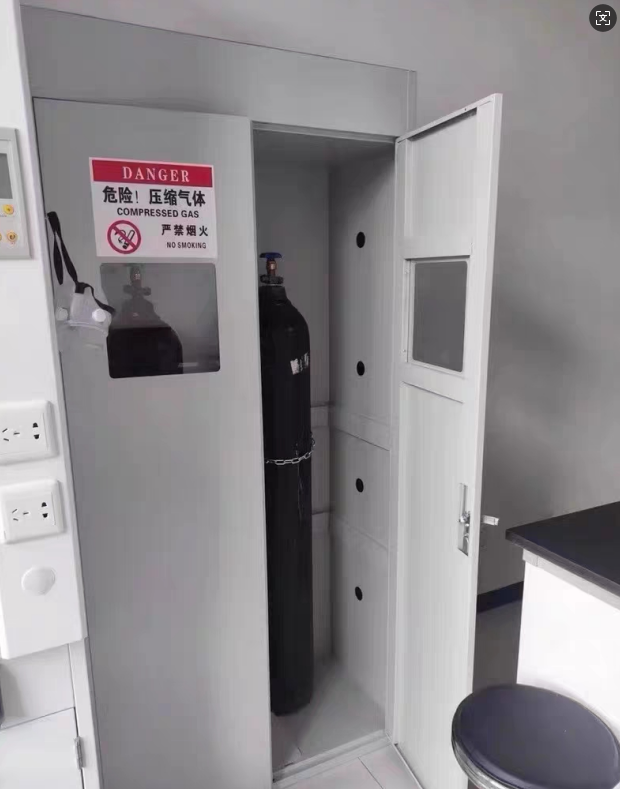
Pro tip: Measure your cylinders’ height and diameter before purchasing—some specialty gases (like helium) may require custom sizing.
2. Alarm System: Basic, Advanced, or None?
A reliable alarm system is critical for early leak detection. Options include:
- No alarm: Suitable for low-risk gases (e.g., inert gases like argon) but not recommended for flammable or toxic gases.
- First-generation alarm: Detects gas leaks via sensors and triggers an audible alert. Manual reset required.
- Second-generation alarm: Advanced features like automatic exhaust fans, remote monitoring, and smartphone alerts. Ideal for high-risk environments (e.g., chemistry labs with acetylene).
Best practice: For Cambridge labs, opt for a second-generation alarm to meet stringent safety protocols. Many models also include “fail-safe” modes (e.g., alarms trigger even during power outages).

Additional Features to Prioritize
Durability: Built to Last
Look for cabinets made from cold-rolled steel with epoxy resin powder coating—this combination resists corrosion, rust, and chemical spills, ensuring a 10+ year lifespan. Avoid cheaper materials (like thin plastic) that degrade quickly in lab conditions.
Ventilation: Critical for Safety
All gas cylinder cabinets must have pass-through ventilation holes on both sides to allow fresh air circulation. Some models include built-in exhaust fans (activated by the alarm system) to rapidly remove leaked gases. For Cambridge labs, ensure compliance with local ventilation codes (e.g., HSE guidelines).
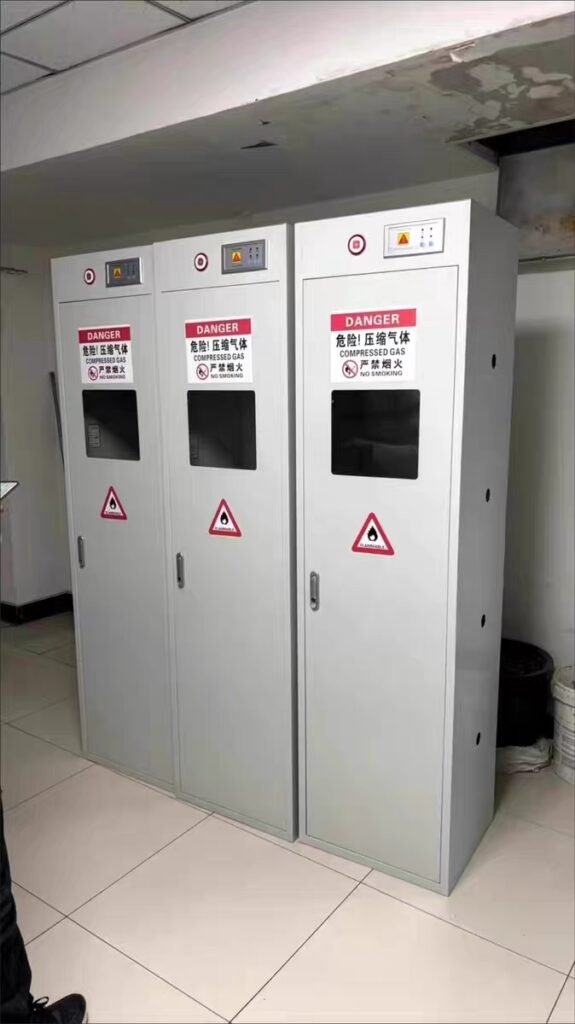
Accessibility: Easy Loading/Unloading
Choose cabinets with removable foot pedals at the base—this simplifies lifting heavy cylinders (up to 50 kg) without straining. The pedal should lock securely when not in use to prevent accidental opening.
Visibility: Monitor Without Opening
A transparent window on the door lets you check cylinder levels or detect leaks without opening the cabinet—reducing exposure to hazardous gases. Look for shatterproof acrylic or tempered glass for durability.
Case Study: Cambridge Lab Best Practices
At the University of Cambridge’s Department of Chemistry, researchers use double-bottle cabinets with second-generation alarms for acetylene and oxygen storage. The cabinets feature:
- Epoxy-coated steel construction to withstand solvent splashes.
- Automatic exhaust fans linked to the alarm system.
- Removable foot pedals for safe cylinder changes.
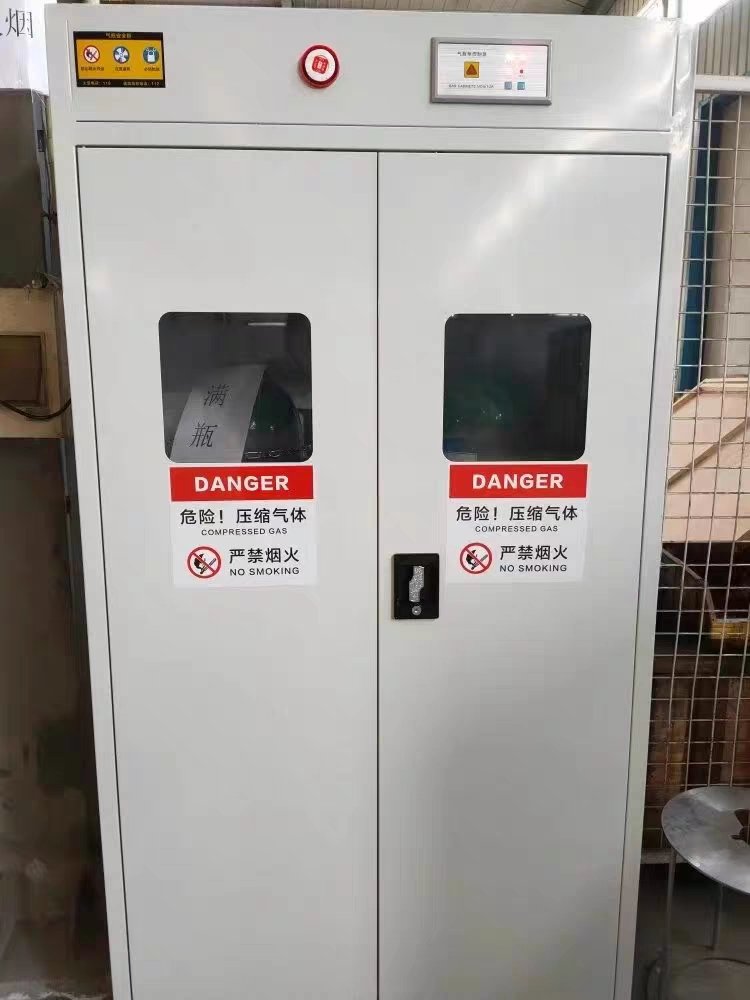
This setup ensures compliance with UK COSHH regulations and minimizes downtime due to equipment failures.
Final Tips for Cambridge Labs
- Consult safety officers: Before purchasing, review your lab’s gas inventory and risk assessments.
- Test alarms regularly: Even advanced systems need monthly checks to ensure functionality.
- Train staff: Proper usage (e.g., securing cylinders with chains, closing doors after access) is as important as the cabinet itself.
